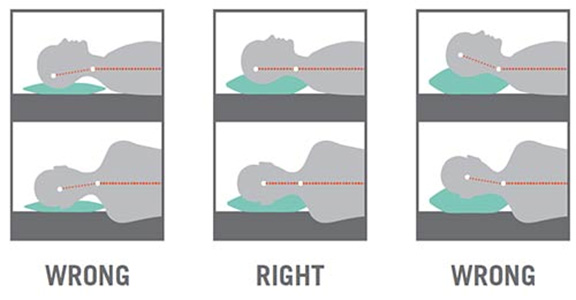
What is Intermittent Fasting and is it healthy?
August 26, 2015
Inhale and exhale your pain away: the diaphragm muscle and how it relates to back pain!
August 31, 2015Sleeping ergonomics – Achieving the best sleeping posture

Have you ever experienced pain, headache or stiffness in your neck and/or back when waking up? Ever wondered why you’re not getting any comfortable sleep?
Since people spend a lot of time lying down in bed, it is important to make sure yore doing it right. Sleeping posture is very important to preserve spinal alignment and reduce stresses on joints thereby promoting healthy posture and good-quality sleep. This means proper body positioning, proper pillows and proper mattresses.
According to recent studies, the healthiest sleeping posture is the side-sleep position. In this position, a pillow should fill the gap between the head and the mattress, maintaining the neck in the center from both shoulders. This avoids sustained bending of the neck to either side, preserving the natural curve and eliminating strains on the neck. Researches have shown that people who sleep on their side are less likely to wake up with symptoms of headaches, neck pain, and arm pain compared with those who sleep in other positions therefore resulting in better sleep quality.
The ideal side sleep position can be adopted by lying on your side with both knees slightly bent towards chest; preferably with a pillow in between to preserve spinal alignment. Do not put weight on your arm by placing them under the pillow; this will restrict blood flow to arms and will cause you to feel tingling, or pins and needles in your arms and/or hands. Instead, arms should be spread in front of your body with a pillow in between.
Pillows
 Pillows are designed to take up the neck curve and fill in the space between the head and the mattress thereby persevering the natural alignment of the spine. Consider the following when selecting a pillow: the height, material and firmness. The height of the pillow should keep the neck in a straight position to maintain the spine symmetrical. If the pillow is too high or low, it will create tension on the neck and lead to developing tightness and stiffness when waking up in the morning. While soft fluffy pillows can be nice and comfortable; they don’t provide enough support for the neck. Good pillows should be firm with a foamy material to provide greater neck support.
Pillows are designed to take up the neck curve and fill in the space between the head and the mattress thereby persevering the natural alignment of the spine. Consider the following when selecting a pillow: the height, material and firmness. The height of the pillow should keep the neck in a straight position to maintain the spine symmetrical. If the pillow is too high or low, it will create tension on the neck and lead to developing tightness and stiffness when waking up in the morning. While soft fluffy pillows can be nice and comfortable; they don’t provide enough support for the neck. Good pillows should be firm with a foamy material to provide greater neck support.
Mattresses
 The quality of a mattress is just as important as that of pillows to ensure good-quality sleep. Studies have shown that the firmness of a mattress (soft or hard) is an important factor in reducing lower back pain. A good mattress should conform the natural curves of your body keeping the spine in normal alignment. Firm mattresses are a better option because they offer sufficient support for the body maintaining spinal alignment. However, soft mattresses create uneven support for the body, which in turn may cause muscle spasm and back pain. Memory-foam mattresses are firm enough and provide good back support and are usually recommended by sleep experts. Moreover, Mattresses should be replaced every 8-10 years because a worn-out mattress can cause the body to sag, resulting in poor back support and back problems.
The quality of a mattress is just as important as that of pillows to ensure good-quality sleep. Studies have shown that the firmness of a mattress (soft or hard) is an important factor in reducing lower back pain. A good mattress should conform the natural curves of your body keeping the spine in normal alignment. Firm mattresses are a better option because they offer sufficient support for the body maintaining spinal alignment. However, soft mattresses create uneven support for the body, which in turn may cause muscle spasm and back pain. Memory-foam mattresses are firm enough and provide good back support and are usually recommended by sleep experts. Moreover, Mattresses should be replaced every 8-10 years because a worn-out mattress can cause the body to sag, resulting in poor back support and back problems.
So make sure you chose the best sleep system that will allow you to achieve the best sleeping posture and hence, ensuring the best-quality sleep for you.
Nermine Farshoukh – Physiotherapist




1 Comment
great. Thanks for sharing helpful article